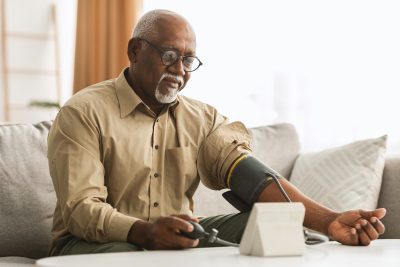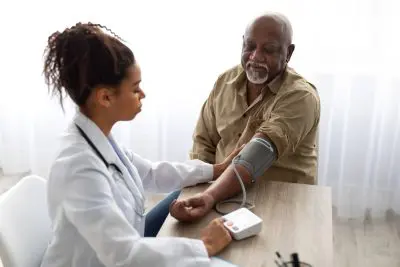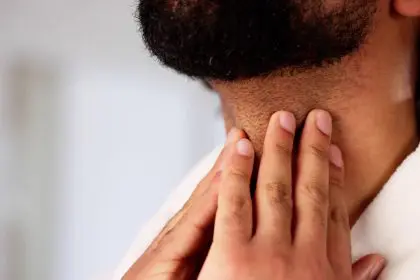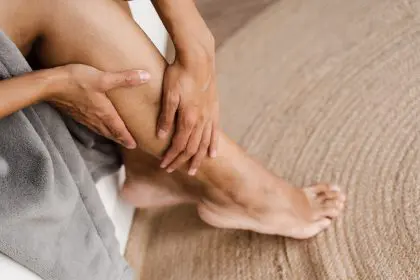Poor circulation affects nearly 20 million Americans, creating a cascade of health issues that can dramatically impact quality of life. From cold extremities and swelling to more serious complications like blood clots and tissue damage, circulation problems demand attention before they escalate into life-threatening conditions.
Foot massage emerges as one of the most effective and accessible methods for maintaining healthy blood flow throughout the body. This ancient practice works through multiple physiological mechanisms that directly address the root causes of circulation problems, offering both immediate relief and long-term preventive benefits.
The feet serve as crucial pumping stations for the circulatory system, particularly for venous blood return to the heart. When circulation becomes compromised, the effects often manifest first in the lower extremities, making targeted foot massage an ideal intervention point for preventing system-wide circulation issues.
Understanding circulation problems and their impact
Circulation problems develop when blood flow becomes restricted or inefficient throughout the cardiovascular system. Poor circulation can result from various factors including sedentary lifestyles, medical conditions, age-related changes, or physical obstructions that impede normal blood flow patterns.
The circulatory system relies on a complex network of arteries, veins, and capillaries working in harmony to deliver oxygen and nutrients while removing waste products. When this system functions poorly, tissues begin to suffer from inadequate oxygen supply and waste accumulation, leading to pain, swelling, numbness, and eventual tissue damage.
Early signs of circulation problems often appear in the feet and legs due to gravity’s effect on blood return to the heart. Recognizing these warning signs allows for early intervention through techniques like foot massage before more serious complications develop.
The science behind massage and blood flow
Foot massage works through several interconnected physiological mechanisms that directly enhance circulation. The mechanical pressure applied during massage creates a pumping action that helps move blood through vessels, particularly in the venous system where blood must travel against gravity back to the heart.
Massage techniques stimulate the release of nitric oxide, a powerful vasodilator that causes blood vessels to relax and expand. This increased vessel diameter reduces resistance to blood flow and allows for more efficient circulation throughout the treated area and beyond.
The rhythmic pressure and release patterns used in foot massage activate the body’s natural muscle pump mechanism. This process involves alternating compression and relaxation of muscles that surround blood vessels, creating a milking action that propels blood forward and prevents stagnation.
Seven key mechanisms that improve circulation
1. Direct mechanical pumping action
Foot massage creates external pressure that mimics the natural muscle contractions responsible for moving blood through vessels. The systematic application of pressure followed by release generates a pumping effect that physically pushes blood forward, particularly in the venous system where blood must overcome gravitational forces.
This mechanical assistance proves especially valuable for individuals with weakened muscle pumps due to inactivity, age, or medical conditions. The external pressure provided by massage compensates for reduced natural pumping capacity, maintaining circulation even when internal mechanisms become compromised.
2. Vasodilation through nerve stimulation
Massage techniques stimulate sensory nerves in the feet that trigger reflexive responses throughout the circulatory system. This nerve stimulation causes blood vessels to dilate, reducing peripheral resistance and allowing blood to flow more easily through the expanded pathways.
The vasodilatory response extends beyond the immediate massage area, creating system-wide improvements in circulation. This neurological response helps address circulation problems that may have developed in areas distant from the feet but connected through the body’s integrated nervous system.
3. Lymphatic drainage enhancement
The lymphatic system works closely with the circulatory system to maintain fluid balance and remove waste products from tissues. Foot massage techniques specifically designed to follow lymphatic pathways help drain excess fluid that can accumulate and impede circulation.
Improved lymphatic drainage reduces tissue swelling that can compress blood vessels and restrict flow. By maintaining optimal fluid balance, massage helps preserve the space needed for unobstructed circulation while preventing the buildup of inflammatory substances that can damage vessel walls.
4. Muscle tension reduction
Chronic muscle tension in the feet and lower legs can compress blood vessels and restrict normal circulation patterns. Massage techniques that target these tense areas help restore normal muscle length and reduce the external pressure on blood vessels.
Relaxed muscles create more space for blood vessels to function optimally while reducing the metabolic demands that contribute to circulation problems. This dual benefit addresses both mechanical restrictions and the increased circulation needs created by tense, overworked muscles.
5. Reflex zone activation
The feet contain numerous reflex zones that correspond to different body systems and organs. Stimulating these zones through massage creates therapeutic responses throughout the body, including improved circulation to organs and tissues far from the feet.
This reflexive response helps address circulation problems that may have systemic rather than localized causes. By activating these reflex zones, foot massage can influence circulation patterns throughout the entire cardiovascular system, providing comprehensive circulatory support.
6. Heat generation and metabolic stimulation
The friction and pressure applied during foot massage generates heat that causes local blood vessels to dilate and increases metabolic activity in the treated tissues. This thermal effect enhances circulation by reducing blood viscosity and improving the efficiency of cellular processes that depend on adequate blood flow.
Increased metabolic activity creates greater demand for oxygen and nutrients, which stimulates the body to enhance circulation to meet these needs. This creates a positive feedback loop where improved circulation supports better metabolic function, which in turn drives further circulatory improvements.
7. Stress hormone reduction
Chronic stress contributes to circulation problems by elevating hormones that cause blood vessels to constrict and increase blood pressure. Foot massage activates the parasympathetic nervous system, which counteracts stress responses and promotes the release of hormones that support healthy circulation.
The relaxation response triggered by massage helps normalize blood pressure and heart rate while reducing the inflammatory processes that can damage blood vessels over time. This stress reduction provides both immediate circulation benefits and long-term cardiovascular protection.
Specific techniques for maximum effectiveness
Different massage techniques target various aspects of circulation improvement, making technique selection important for addressing specific circulation problems. Effleurage strokes that move toward the heart help promote venous return, while circular pressure techniques can address areas of stagnation or congestion.
Deep pressure techniques work best for activating muscle pumps and breaking up areas of tension that may restrict blood flow. However, lighter techniques may be more appropriate for individuals with fragile circulation or those recovering from circulation-related health issues.
The duration and frequency of massage sessions significantly impact their effectiveness for circulation improvement. Short, frequent sessions often provide better results than occasional lengthy treatments, as they maintain consistent stimulation of circulatory mechanisms without overwhelming compromised systems.
Timing and positioning considerations
The timing of foot massage can optimize its circulation benefits. Evening sessions help counteract the effects of gravity and prolonged standing or sitting throughout the day. Morning sessions can help activate circulation before daily activities place demands on the cardiovascular system.
Proper positioning during massage enhances its effectiveness for circulation improvement. Elevating the feet above heart level during massage helps venous return while reducing the work required to move blood back to the heart. This positioning proves especially beneficial for individuals with existing circulation problems.
Integration with lifestyle factors
Foot massage works most effectively when combined with other circulation-supporting lifestyle practices. Regular physical activity, proper hydration, and avoiding prolonged periods of immobility all enhance the benefits obtained from massage therapy.
Dietary considerations also play a role in maximizing massage benefits for circulation. Foods that support blood vessel health and reduce inflammation can amplify the positive effects of massage while addressing some of the underlying factors that contribute to circulation problems.
Long-term prevention and maintenance
Regular foot massage creates cumulative benefits that extend well beyond immediate circulation improvements. Consistent practice helps maintain healthy blood vessel function while preventing the gradual decline in circulation that often accompanies aging or sedentary lifestyles.
The preventive benefits of foot massage make it particularly valuable for individuals at risk of developing circulation problems due to family history, occupational factors, or lifestyle choices. Early intervention through regular massage can help maintain optimal circulation before problems develop, making treatment more effective and less intensive than addressing established circulation issues.
Foot massage represents a simple yet scientifically sound approach to preventing and addressing circulation problems. Its effectiveness stems from multiple physiological mechanisms that work together to optimize blood flow while addressing the various factors that contribute to circulatory dysfunction.


















